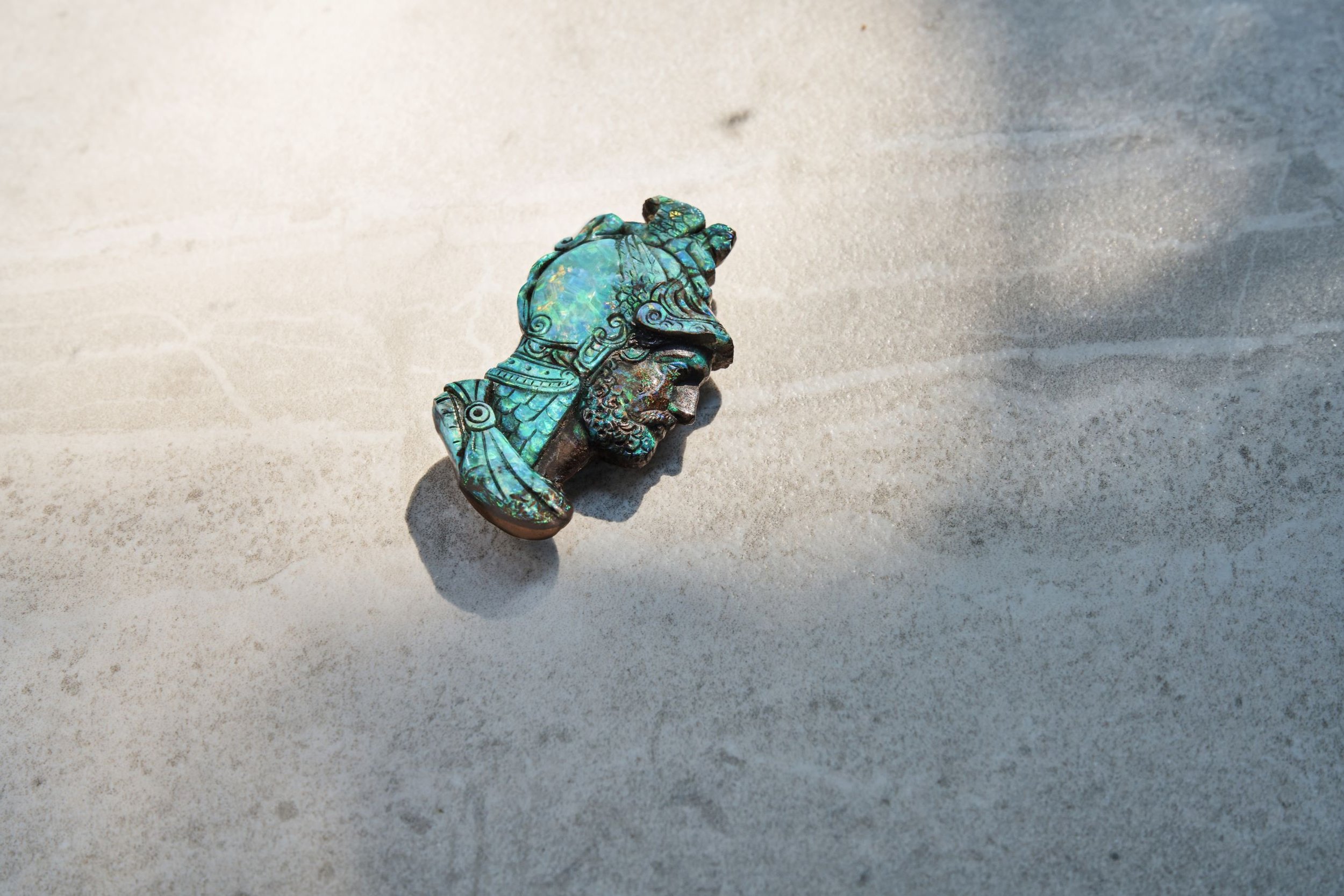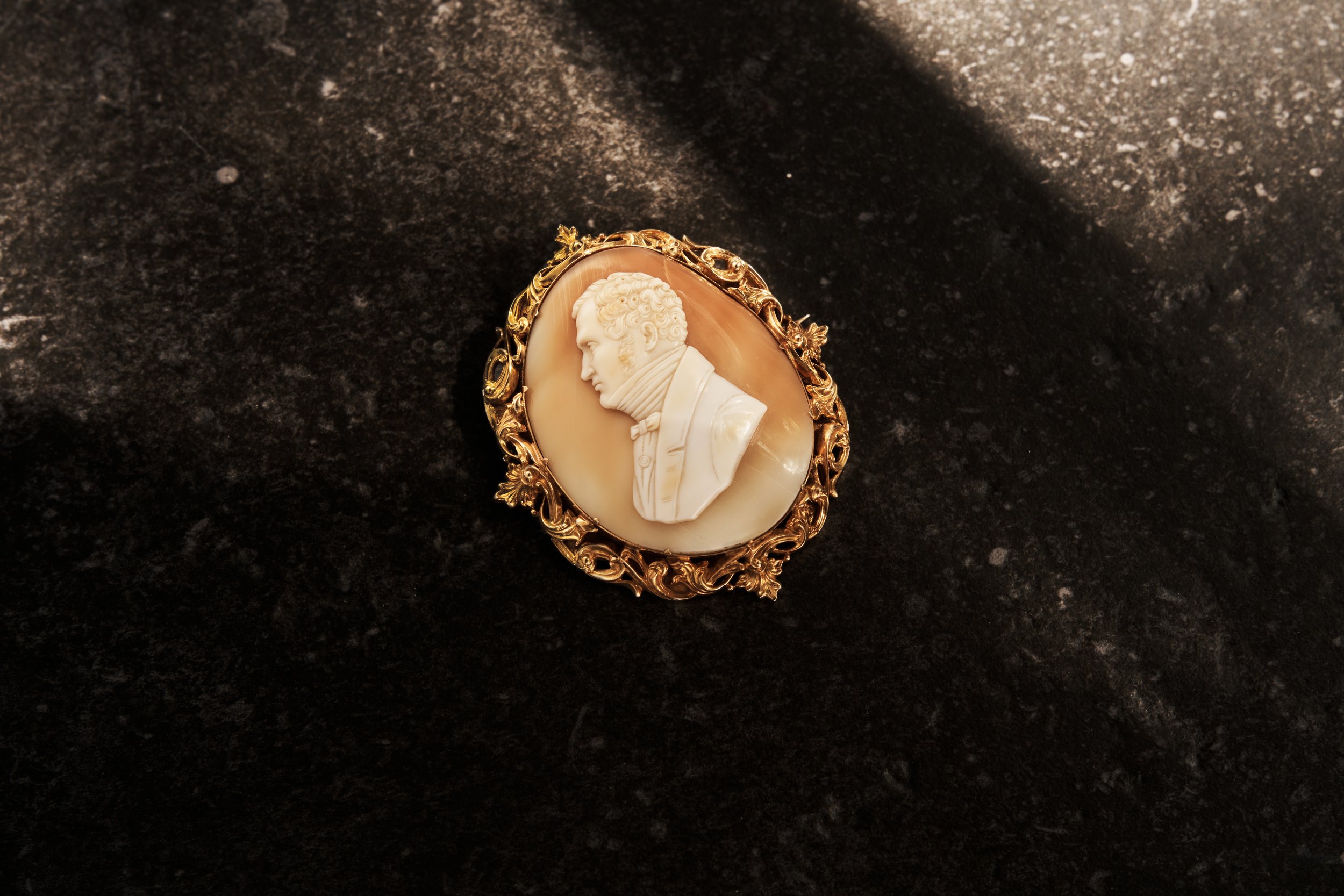THE ORIGIN OF THE CAMEO



Susan Rumfitt, Head of Jewellery, discusses the forthcoming Fine Jewellery auction: “We are looking forward to our next Fine Jewellery auction at Dore & Rees in December and already have a lovely selection of Cameo Jewellery in the auction. Cameos have been associated with power and wealth since Ancient Roman times and were an essential part of a nobleman’s collection of works of art. Today collectors are similarly looking for the finest examples and we are delighted to have an opal cameo by Wilhelm Schmidt in the auction as well as a delightful Georgian riviere amongst the pieces on offer.”
THE ORIGIN OF THE CAMEO
Alexandria, founded by Alexander the Great in Egypt, 332BC, is believed to be where cameo carving was established. Multi-layered sardonyx stones, sourced from India and Arabia, were used. Cutters were inspired to produce compositions in relief, known as cameos, rather than carving into the stone and producing an intaglio. The picture was prominent in the upper layer of the stone, standing out against the bold dark colours below. The number of layers of colour varied from two to five.
IMPORTANT ERAS AND PEOPLE ASSOCIATED WITH CAMEOS
During the Hellenistic period women began to wear more decorative items. Cameos were worn in diadems, bracelets, pendants and formed clothing ornaments. The cameo represented luxury and splendour and fashionable subjects included Aphrodite, Eros, Dyonysus as well as landscapes and pastoral subjects.
As a result of a massive infusion of Greek art, literature and philosophy, the subject matter for cameos was endless and cameo art was thriving. The Greek engravers, experts in their field, carried on their trade and taught the skills to the Romans.
From the Renaissance onwards there was renewed interest in classicism and Greco-Roman arts and literature. Florence was at the heart of the artistic revolution and Lorenzo de Medici established himself as great patron of the arts. He commissioned and collected many cameos as did Cardinal Pietro Barbo (later Pope Paul II). Ancient glyptic pieces became the object of passionate collecting. The legendary collectors including, the Medicis, Gonzagas, Farneses, Popes Paul II and Leo X – were also art patrons, stimulating carvers to produce new works. Cameos were mounted in brooch like settings and were worn on the shoulder or hat as well as smaller rings and necklaces.
Elizabeth I was credited with introducing the custom of giving cameo brooches or pendants as gifts to her loyal subjects or as payment for a particular service. The most famous example is the Armada/Heneage brooch designed by Nicholas Hilliard and now in the Victoria and Albert Museum, London.
Napoleon Bonaparte (1769-1821) was hugely interested in cameos and after his 1796 Italian campaign they became more popular across France. He wanted to create the myth that his French Empire was as important and influential as the Roman Empire and he reinforced this by adopting symbols and jewellery from past times. He brought many cameos back from Italy for himself and was so impressed with the art form that he actively promoted cameo carving in France. Even his Coronation crown of 1804 featured cameos. In 1805 he extended the Prix de Rome (a scholarship for arts students), to gem engravers and he also fostered a school for students of the subject under the Roman Vincent Jeuffroy of the Paris Mint. Napoleons’ favoured engraver was Niccolò Morelli (whose clients included Francis I of Austria and Count Sommariva). He virtually became the empire’s official engraver.
THE GRAND TOUR
For wealthy English Georgians and Victorians the “Grand Tour” was de rigueur and Italian cameos were the one must-have item with which they returned home. Eventually however cameos which imported unmounted, into England, by the thousands. Queen Victoria greatly appreciated the art of cameo engraving and she owned several pieces. They became hugely popular in the Victorian period as materials such as shell and lava made them more accessible to the masses.
TASSIE CAMEOS
A Tassie is a paste or glass copy of a cameo or intaglio. James Tassie (1735-1799), a Scottish gem engraver, created replicas of ancient engraved agates and gemstones following his career as a glyptographer. Tassie took his business to London and established himself as a serious craftsman creating his replicas using his own very high and exacting standards. These cameos are also highly collectable today
WILHELM SCHMIDT, (1845-1938)
Schmidt was born in Idar Oberstein and at the age of 15 went to Paris and trained with cameo-cutter Arsène, Although there had been a huge interested in Cameos for centuries, by the time Schmidt had graduated in the 1860’s, the interest in cameos was beginning to fade. He eventually settled in London and worked alongside his brother in Hatton Garden who dealt in gemstones. He was working with some fabulously rare gemstone specimens and produced pieces for John Brogden, Child and Child and Carlo Giuliano and this helped to raise his profile. The big break came when he mastered carving opals.
Gertrud Seidmann, a connoisseur of Schmidt's work, explained the importance of Schmidt’s work:
"opal cameos, if rare, were not unknown (in the 19th century) but Schmidt had invented a novel technique: instead of carving the whole cameo from precious opal, he used blanks with a thin layer of precious opal overlaying the matrix, in the same way in which the contrasted layers of agates were traditionally used to set off the background."
Schmidt didn’t sign the pieces he was selling to other retailers. To have an unmounted opal cameo signed by Schmidt is fabulous and we are delighted to be offering it in our December Sale.
fine jewellery
TUESDAY 6 DECEMBER AT 10:30AM
INVITING ENTRIES UNTIL 21 OCTOBER
PICTURED:
A CARVED BLACK OPAL WARRIORS HEAD, LATE 19TH CENTURY, BY WILHELM SCHMIDT, £6,000 - £8,000
A GEORGIAN SHELL CAMEO NECKLAE, CIRCA 1800, £4,000 - £5,000
A 19TH CENTURY CAMEO BROOCH, CIRCA 1840, DEPICTING THE PROFILE OF A GENTLEMAN, £600-£800
